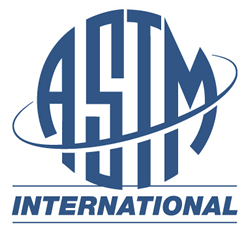 When ASTM International Committee D35 on Geosynthetics meets in Jacksonville, Florida (January 30 – February 1) during its regularly scheduled winter committee week meeetings, a special workshop on pore size distribution (PSD) in geotextiles will be held. The workshop takes place Wednesday, January 30 from 10:00 am – 12:00 pm.
When ASTM International Committee D35 on Geosynthetics meets in Jacksonville, Florida (January 30 – February 1) during its regularly scheduled winter committee week meeetings, a special workshop on pore size distribution (PSD) in geotextiles will be held. The workshop takes place Wednesday, January 30 from 10:00 am – 12:00 pm.
Of note at this workshop, a far more accurate test for PSD will be discussed along with newly available equipment that will enable manufacturers and laboratories to perform the more accurate test.
THE TROUBLE WITH AOS
Geotextiles have historically been characterized by AOS, or “Apparent Opening Size.” This has been measured in accordance with ASTM D 4751, Standard Test Method for Determining Apparent Opening Size of a Geotextile, and many specifications (such as AASHTO M288) and agencies require AOS to be reported.
The current AOS testing is not nearly as accurate as it could be, however. The test uses fine glass beads shaken through a geotextile to characterize, crudely, the opening size as indicative of potential paths for sediment or other fines that may influence the filtration, separation, and drainage characteristics of the material. Long-used by the geosynthetics field, the AOS test has problems of consistency and measurement due to specimen clamping, the management of and disparities in glass bead sizes, moisture and static electricity biases, and different approaches commonly used between manufacturers and third-party laboratories.
Of particular difficultly with the current AOS characterization is that the result is heavily determined by the largest opening in a specimen. The test allows for the largest size to be determined, but the frequency within the sample is not known. The test’s limitations, as such, have made it rarely applicable outside the United States.
A move away from D 4751 to a more internationally relevant and more accurate geotextile specimen characterization would be welcomed.
PSD — WHAT’S OLD IS NEW AGAIN WITH D 6767
If ASTM D35 begins to move away from 4751, it will not have to “reinvent the wheel.” ASTM D 6767, Standard Test Method for Pore Size Characteristics of Geotextiles by Capillary Flow Test, is already on the books and is perfectly applicable to characterizing the openings in a geotextile sample.
ASTM D 6767 determines a range and frequency of a variety of opening sizes associated with a geotextile specimen. It utilizes an oil coating on the sample and measures the gradation of sizes associated with the geotextile’s openings, comparable to a soil’s particle sizes, by subjecting the sample to a non-reactive gas that causes the liquid on the geotextile to displace and form bubbles through the openings.
The test works simply and a version of it is used in other industries, such as for air filter characterization. As a side benefit, this PSD approach would thus not only characterize opening sizes and distribution in a geotextile but strong correlations to air permeability and hydraulic permittivity.
NEW EQUIPMENT FOR D 6767
Though D 6767 has promised a far more accurate measurement, the equipment availability and cost for performing the test has historically been prohibitive. Neither manufacturers nor labs have been too willing to make the investment, but new equipment that will promise a far more affordable D 6767 test may tip the scales.
During the PSD Workshop at D35’s meeting, it is planned that the new equipment will be on site to facilitate discussion and understanding.
A new and smoother path, trod by an old and reliable test, may be on the way for geotextiles.
For information on D35’s activities, please visit the group’s website.











